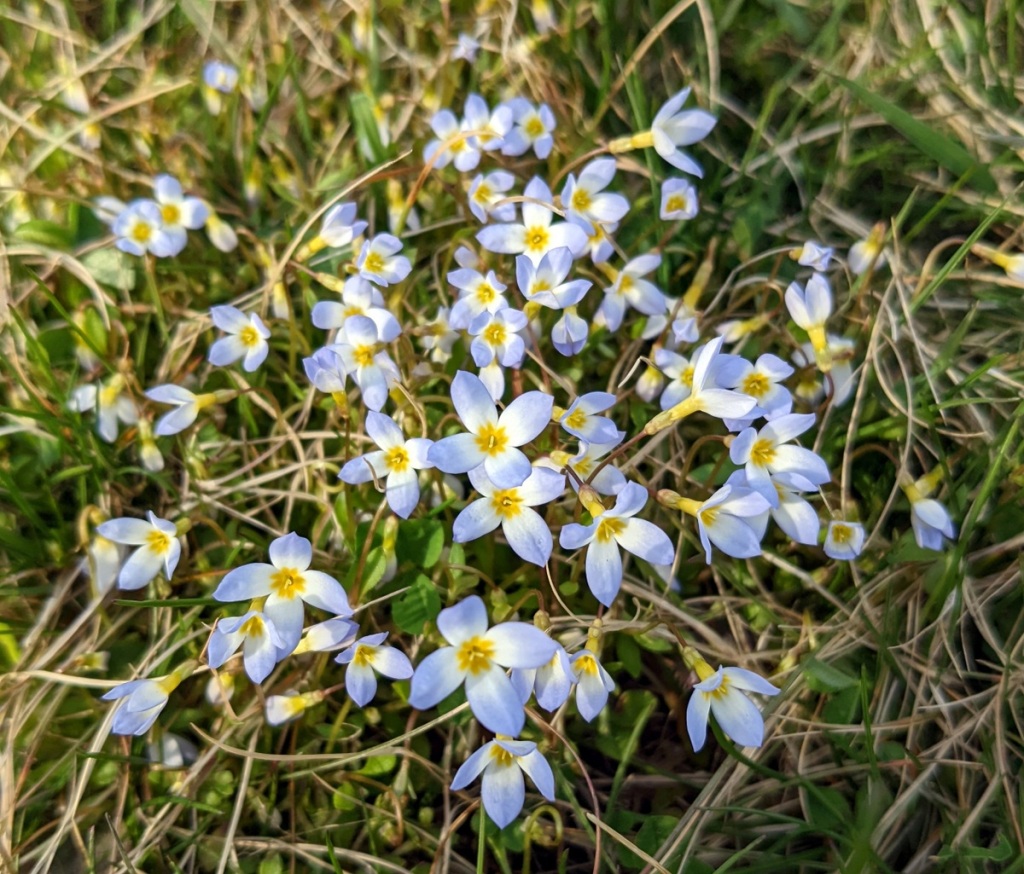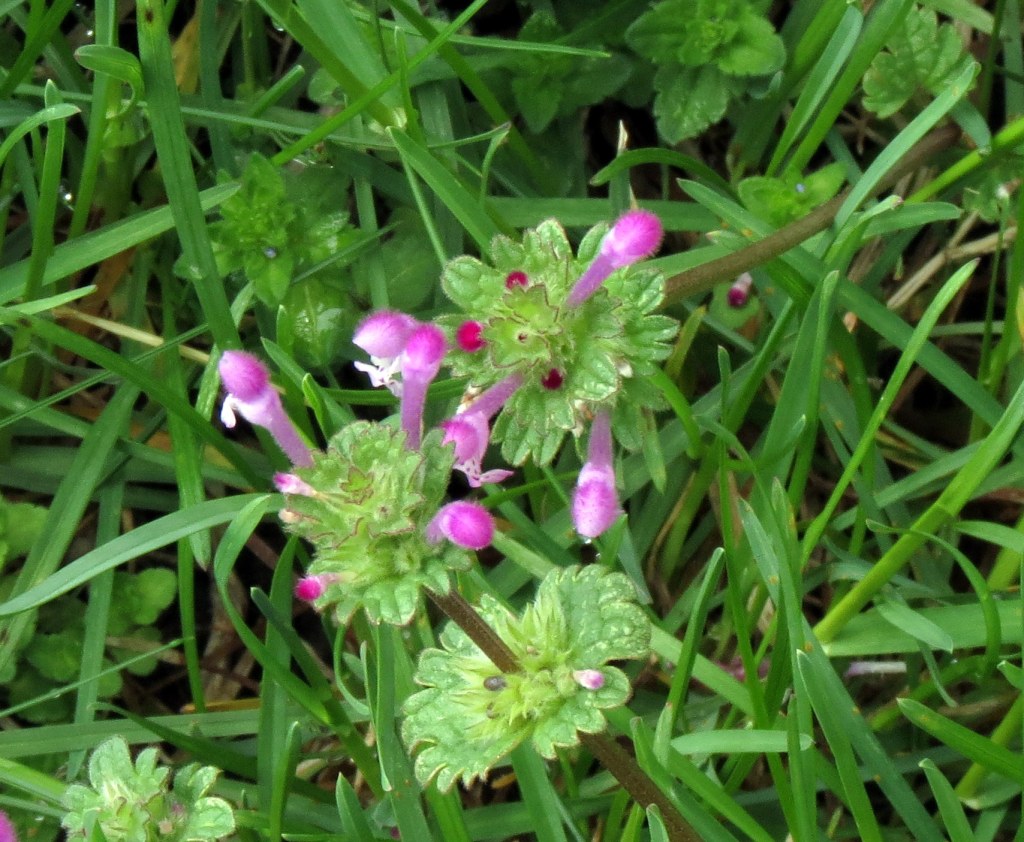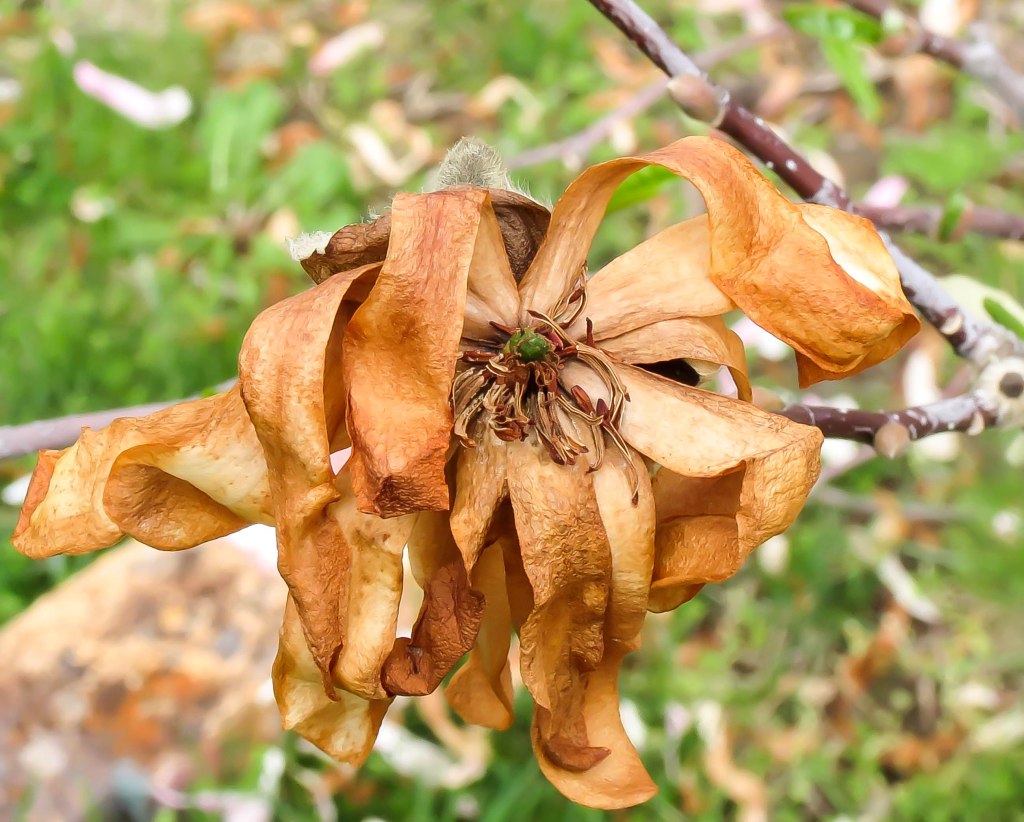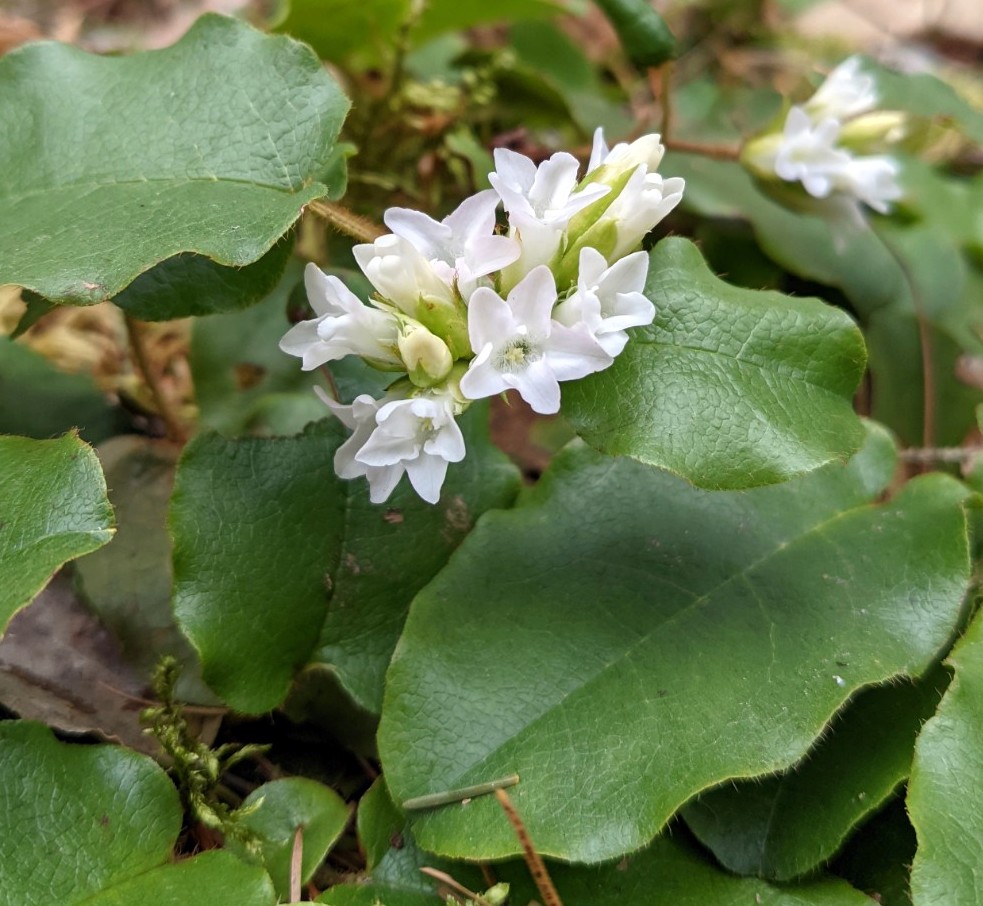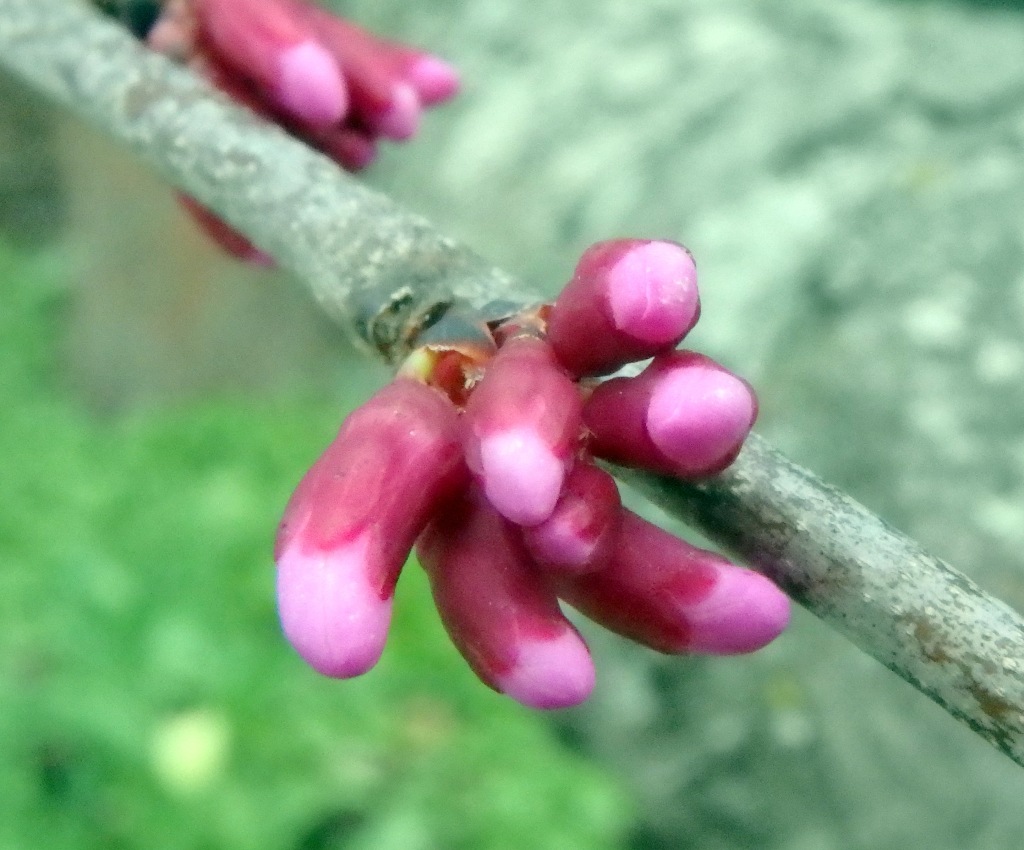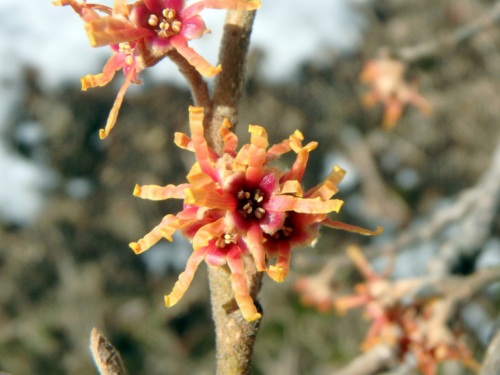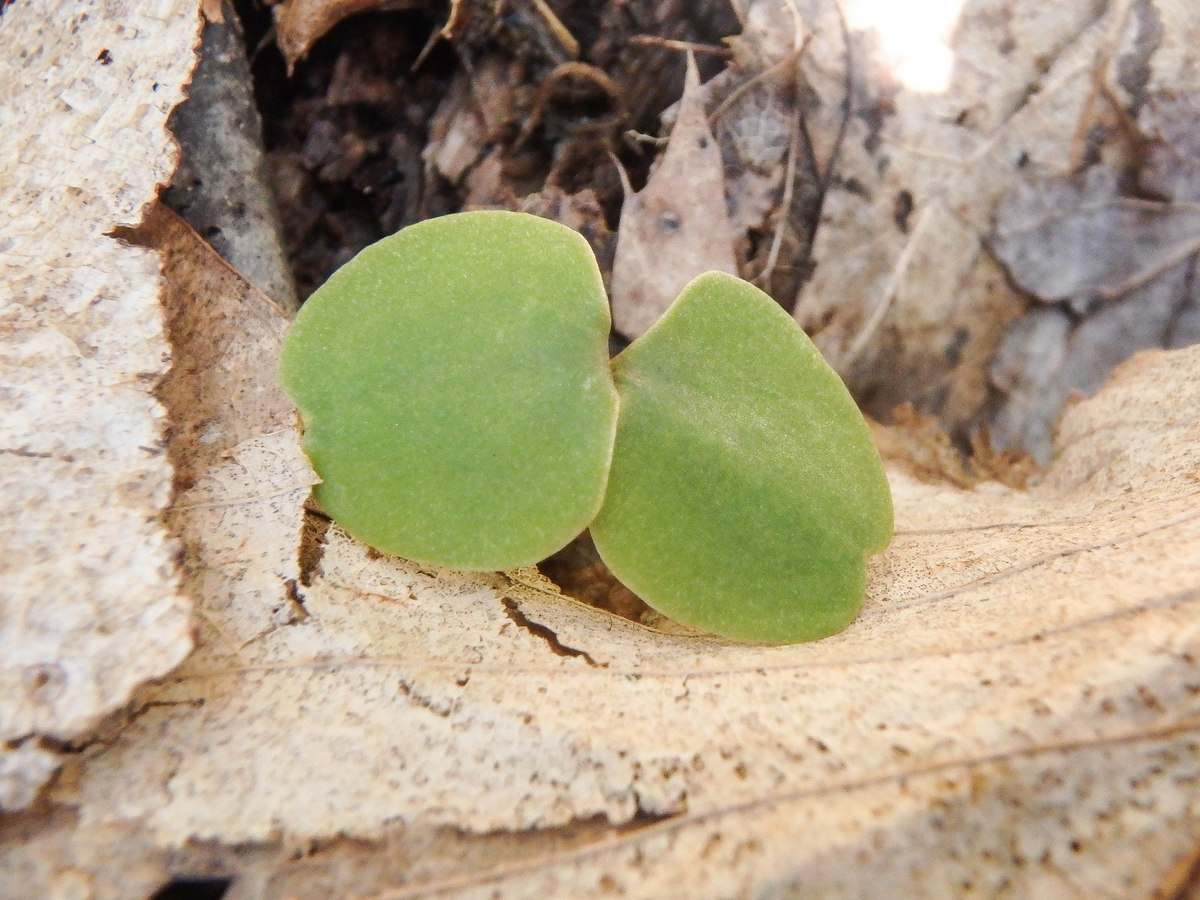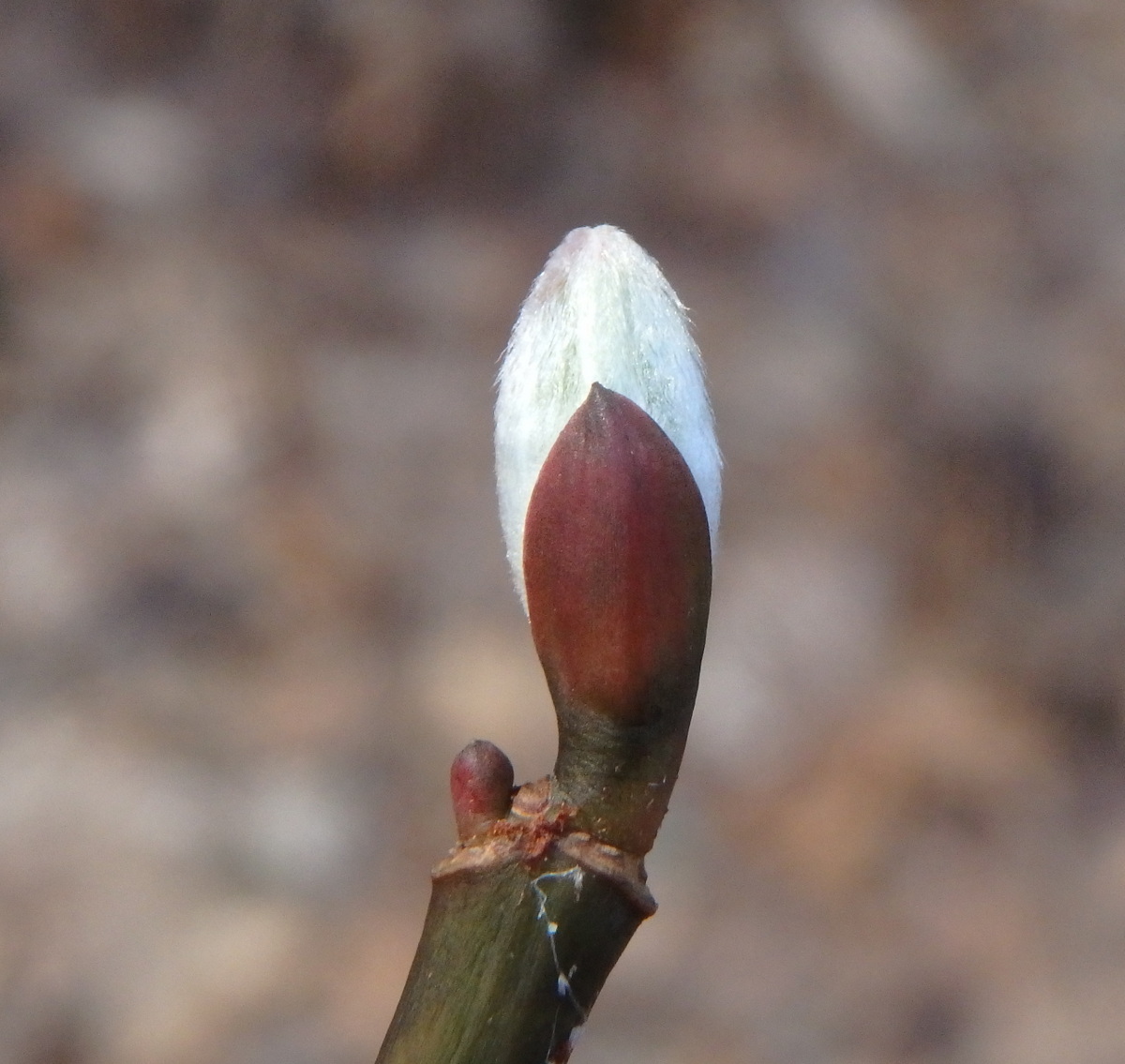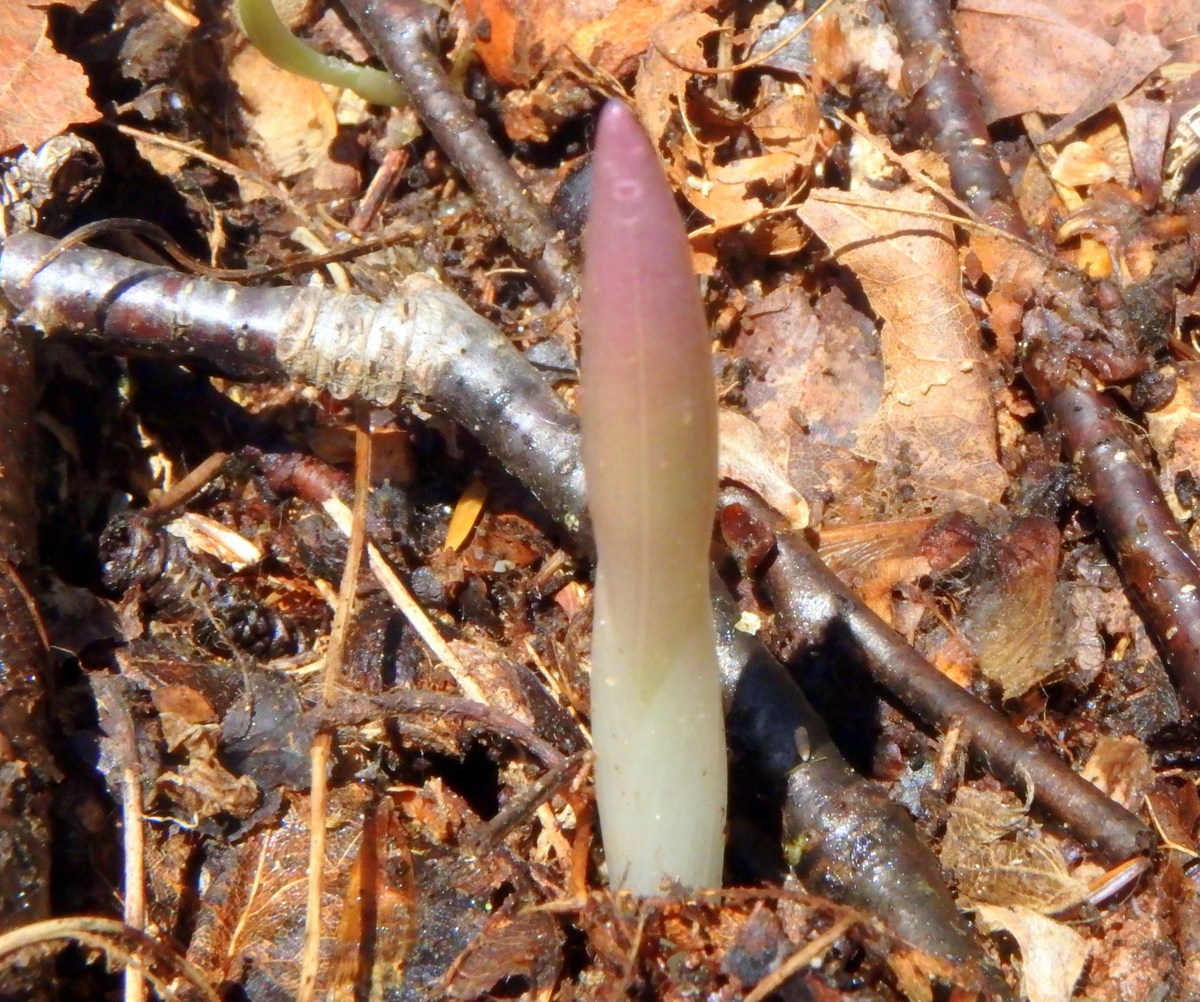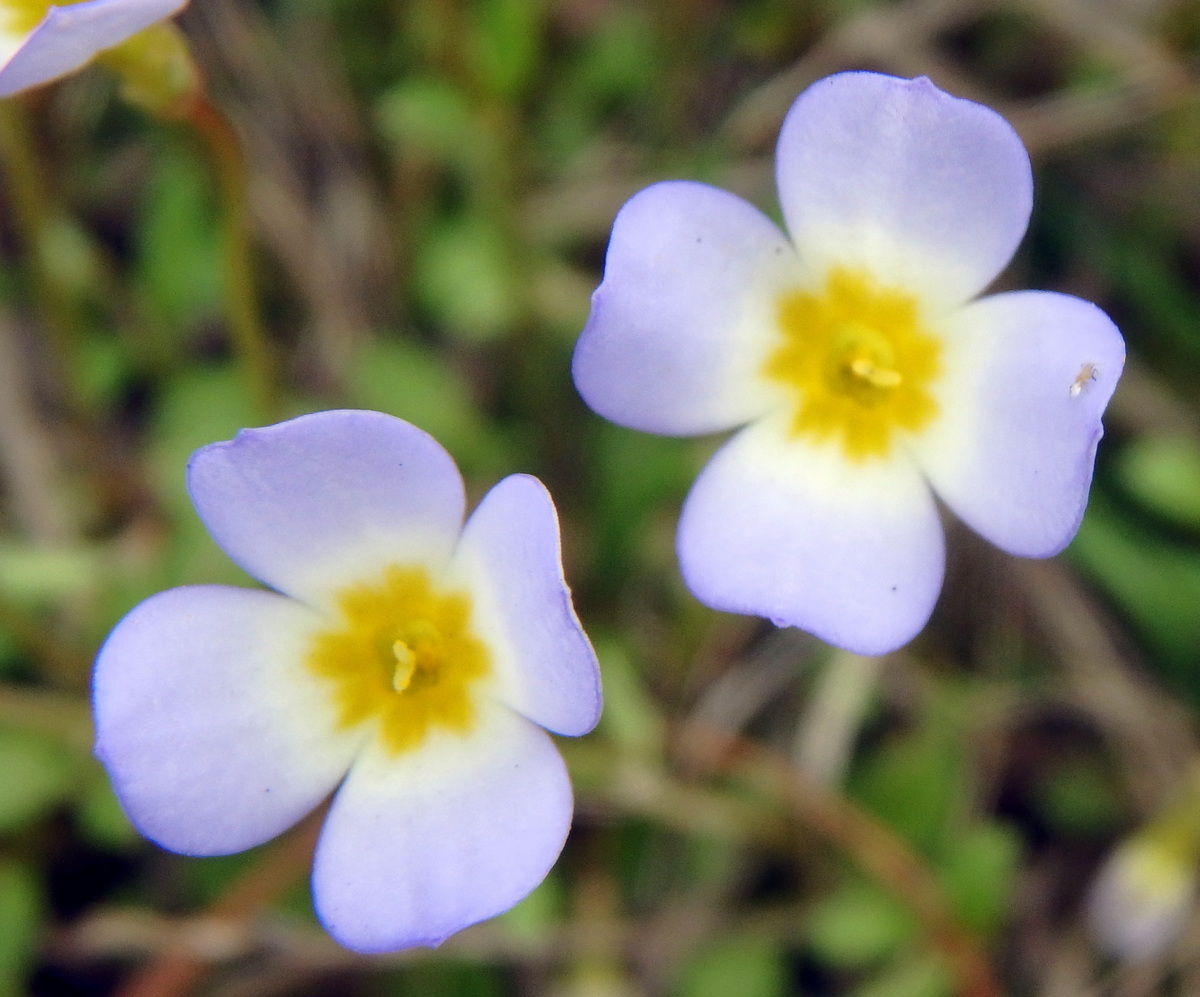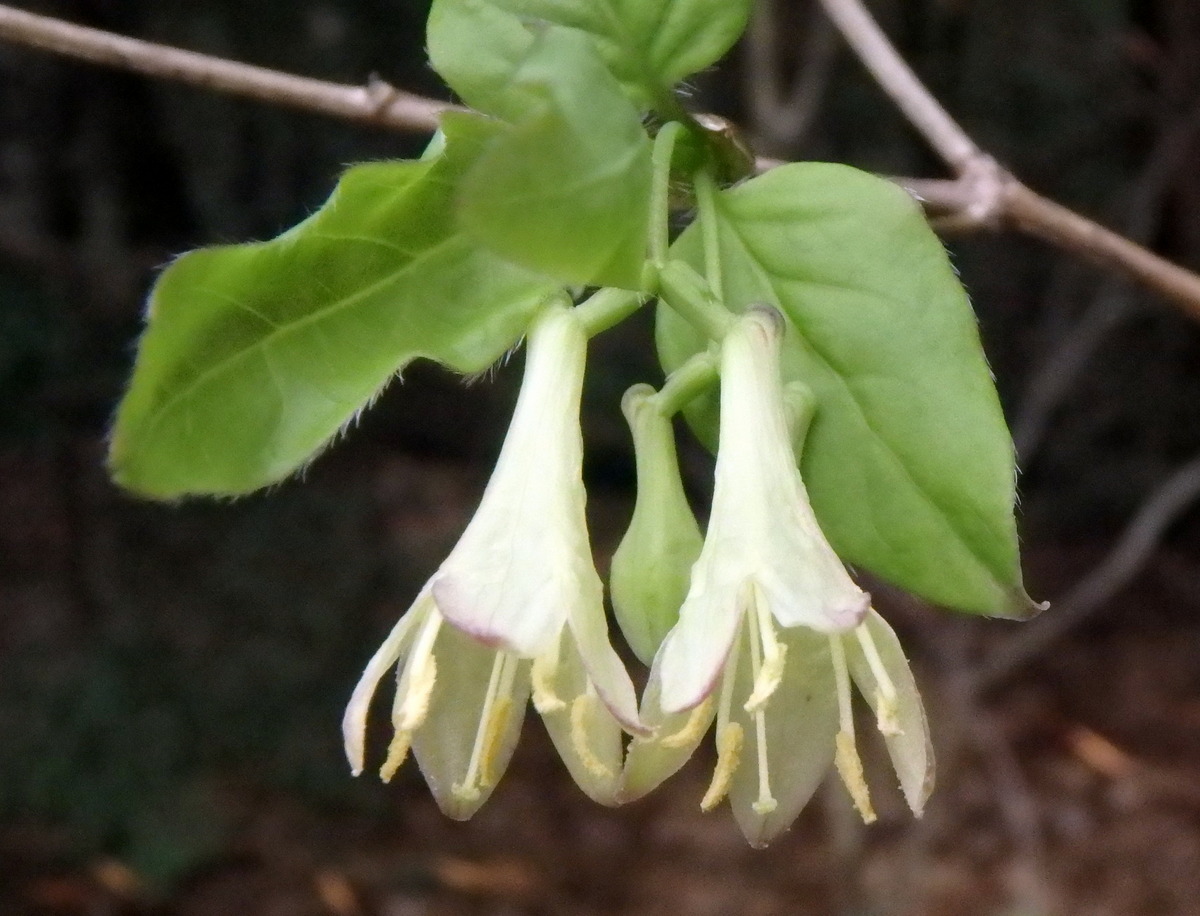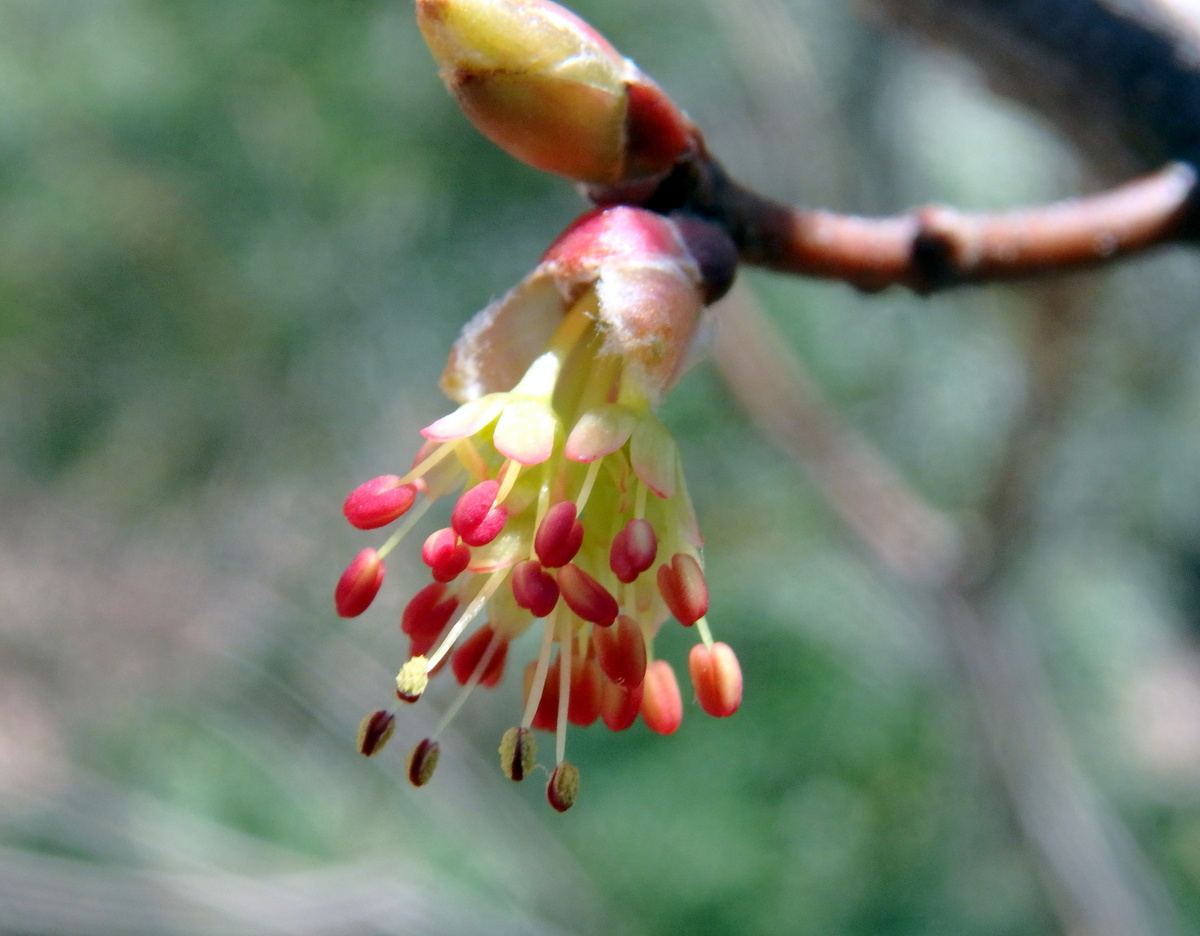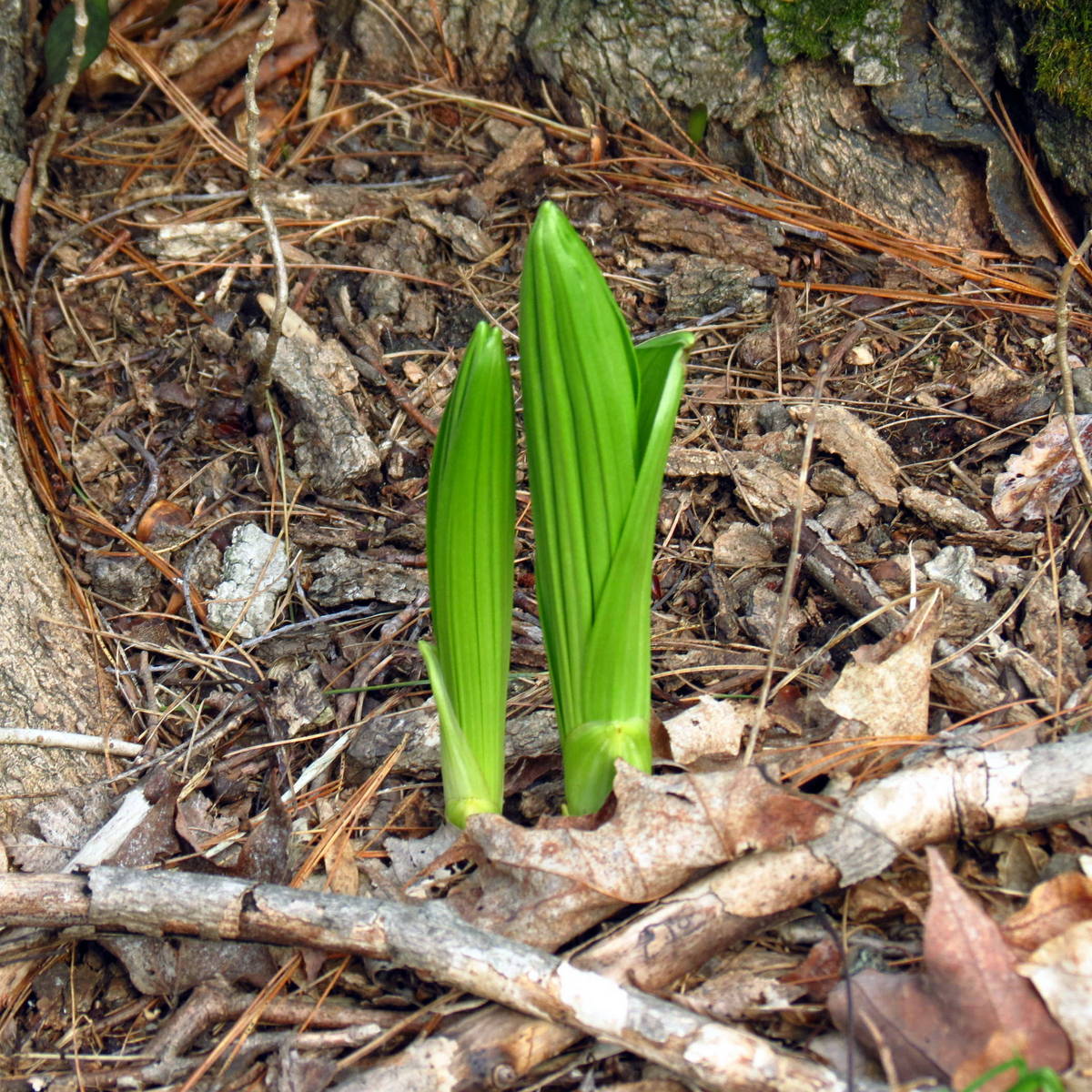
Purple (or red) trillium (Trillium erectum,) one of our biggest and most beautiful wildflowers, has just opened. Trilliums are all about threes and multiples of threes, which ia easily seen here. Though beautiful it has a a few secrets; flies are drawn to the plants because of the carrion scented flowers, and for that reason it is also called “stinking Benjamin.” Benjamin, according to the Adirondack Almanac, is actually a corruption of the word “benjoin,” which was an ingredient in perfume that came from a plant in Sumatra. According to the U.S. Forest service the root of this trillium was traditionally used as an aid in childbirth by Native Americans, and for that reason it is also called “bethroot,” which is a corruption of “birth root.”

I’m happy to say that the frosts we had didn’t wipe out the bloodroot plants (Sanguinaria canadensis,) though their numbers are down this year in this spot.

The flower petals, typically eight of them, drop off within a day or two of pollination, so their time with us is brief. It’s hard to believe that it’s already time to say goodbye to them for another year. I’ll look forward to seeing their simple beauty again next spring.
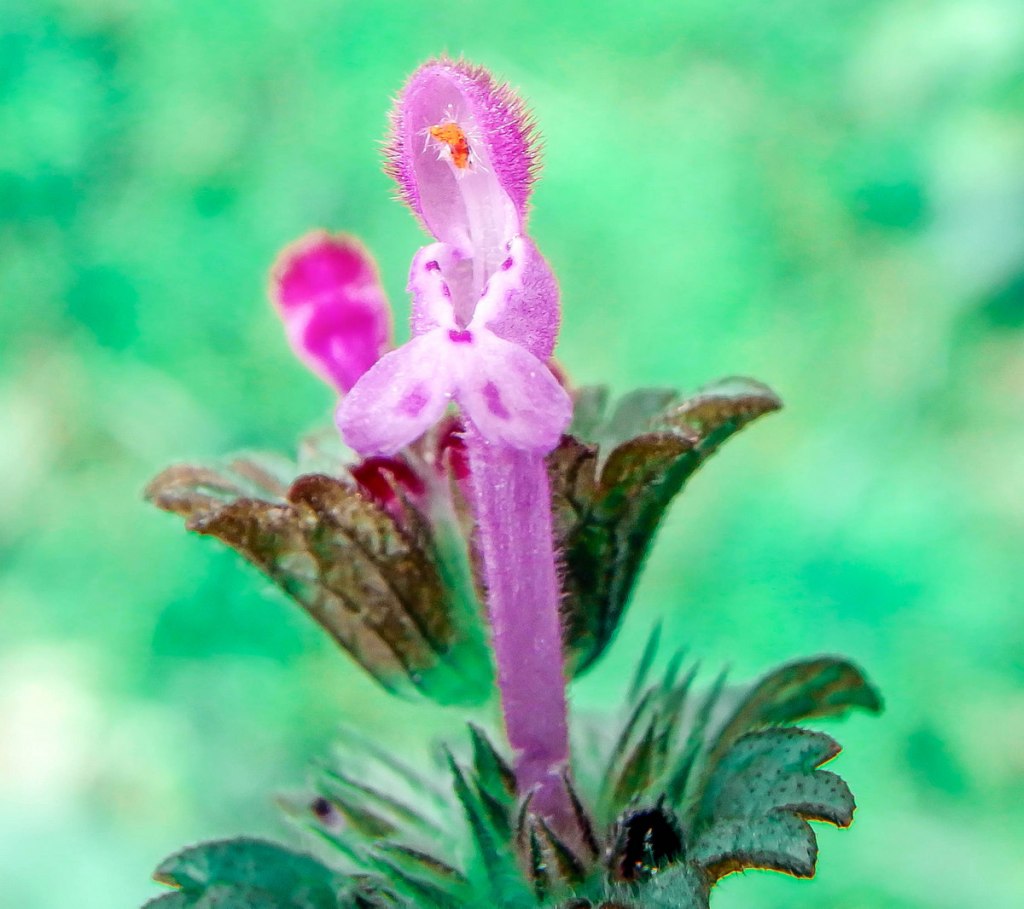
Henbit (Lamium amplexicaule,) which is usually one of the earliest flowers, has finally come around. I’m not sure what held it up but it seems very late. I usually see them by the end of March. Henbit is a “weed” in the mint family and gets its common name from the way chickens peck at it. I’ve read that the leaves, stem, and flowers are edible and have a slightly sweet and peppery flavor. It can be eaten raw or cooked, so maybe that’s one way of getting it out of your garden.

I haven’t seen a lot of common chickweed (Stellaria media) this year either. This is another edible “weed” that is grown for human consumption in some countries, and is said to be far more nutritious than cultivated lettuce. Chickens can also eat it. The five petals are cut so deeply they look like ten on flowers that are smaller than a pencil eraser.
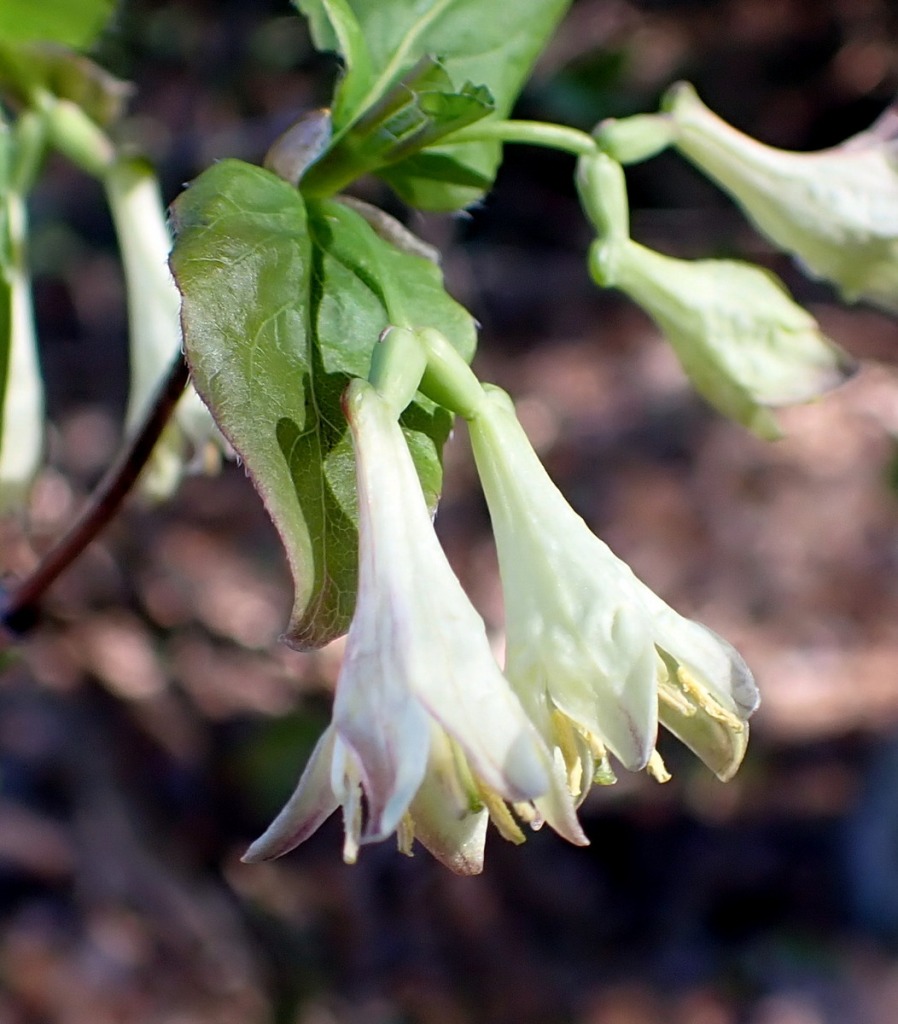
Fly honeysuckle (Lonicera canadensis) is a native shrub that often blooms in late March to mid April, but it too seems to have been held back this year. The pale-yellow color of the flowers and the unusual way that they form in pairs that branch off from a single stem make this shrub very easy to identify. I can’t think of another like it. The unusual twinned flowers will become twinned, orange red, oval fruit. I’ve read that many songbirds love the berries. I can’t say fly honeysuckle is rare but I know of only four or five places to find it. It seems slow growing and isn’t a real robust grower. I know one shrub that hasn’t seemed to change at all in ten years. You can find it on the edge of woods, usually in shade or partial sun.

Myrtle (Vinca minor) is an invasive plant that forms large mats that choke out natives but it’s also a plant that’s been shared from neighbor to neighbor for almost as long as this country has been a country, so nobody really cares. Many of the people I once gardened for thought it was a native plant that they inherited when they bought their house. They were always surprised when I told them it was from Europe, but they always wanted to keep it. I’ve found it growing and blooming along with lilacs and peonies near old cellar holes out in the woods, all of it so old nobody could remember who had even lived there. The word vinca means “to bind” in Latin, and that’s exactly what the wiry stems do.
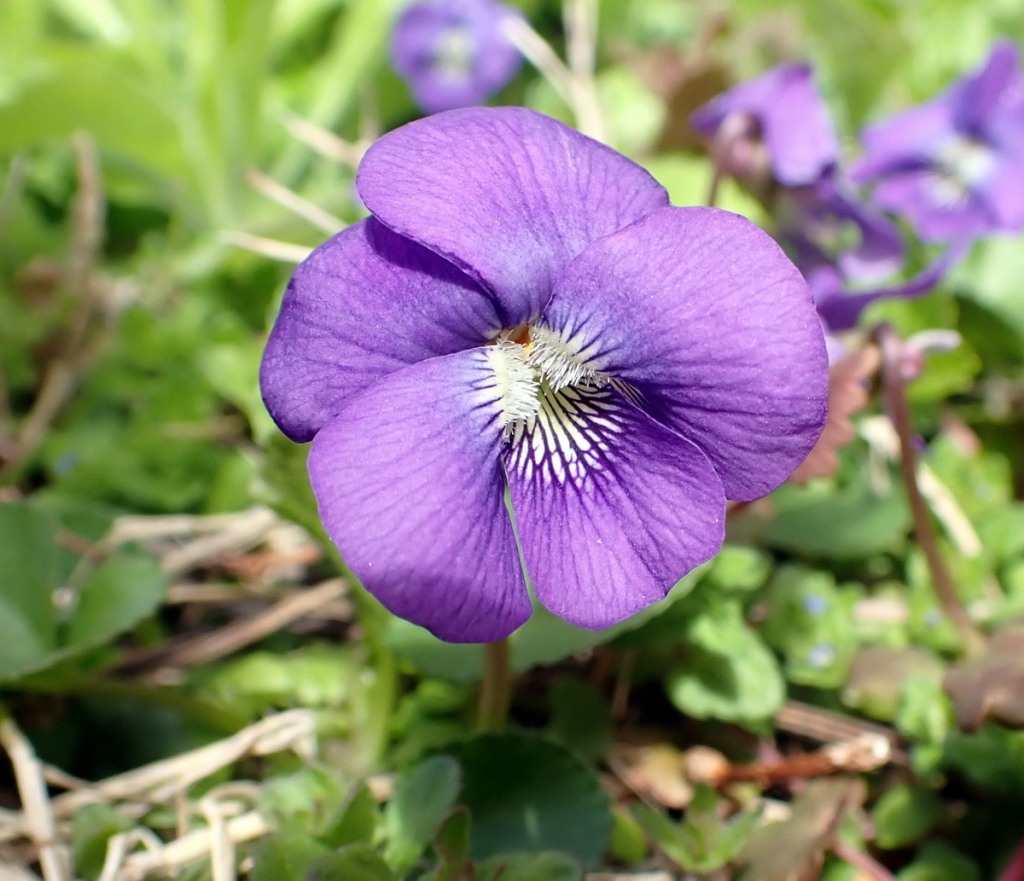
Blue violets (Viola sororia) are actually purple and they’re just coming into bloom. I’m sure many gardeners won’t be happy to hear that because if left unchecked these plants can take over a garden in no time at all. But really, you’re living in a dream world if you think you can beat them, because even when we don’t think they’re blooming their unseen petal-less flowers, called cleistogamous flowers, are flinging seeds out of their 3-part seed capsules. I used to dig and pull them from many gardens by the hundreds. Now I just enjoy them.

I was surprised to see common yellow wood sorrel (Oxalis stricta) blooming already. It’s a common plant that some think is a clover, but clovers have oval leaves and this plant’s leaves are heart shaped. Unlike clover leaves they fold up at night and in bright sunlight, as they have done here.
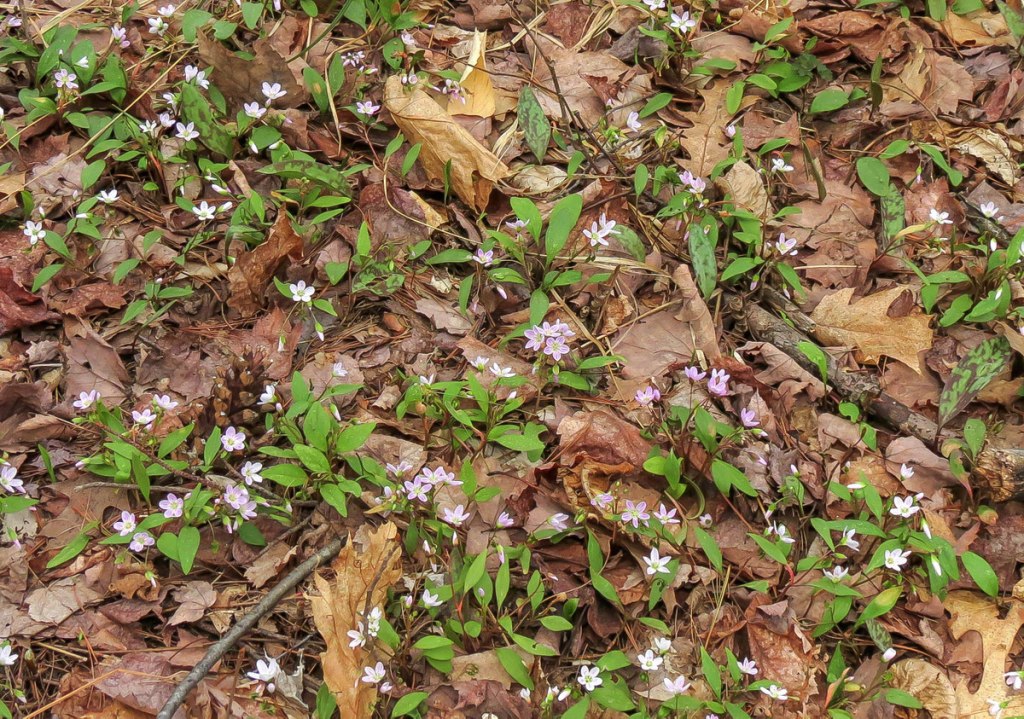
Spring beauties (Claytonia carolinana) are about at their peak of bloom now, and this shot shows how the tiny things can carpet a forest floor. It also shows the variations in color they have, from nearly all white to very pink. They’re beautiful little things and I hope everyone gets a chance to see them. They won’t be with us much longer.
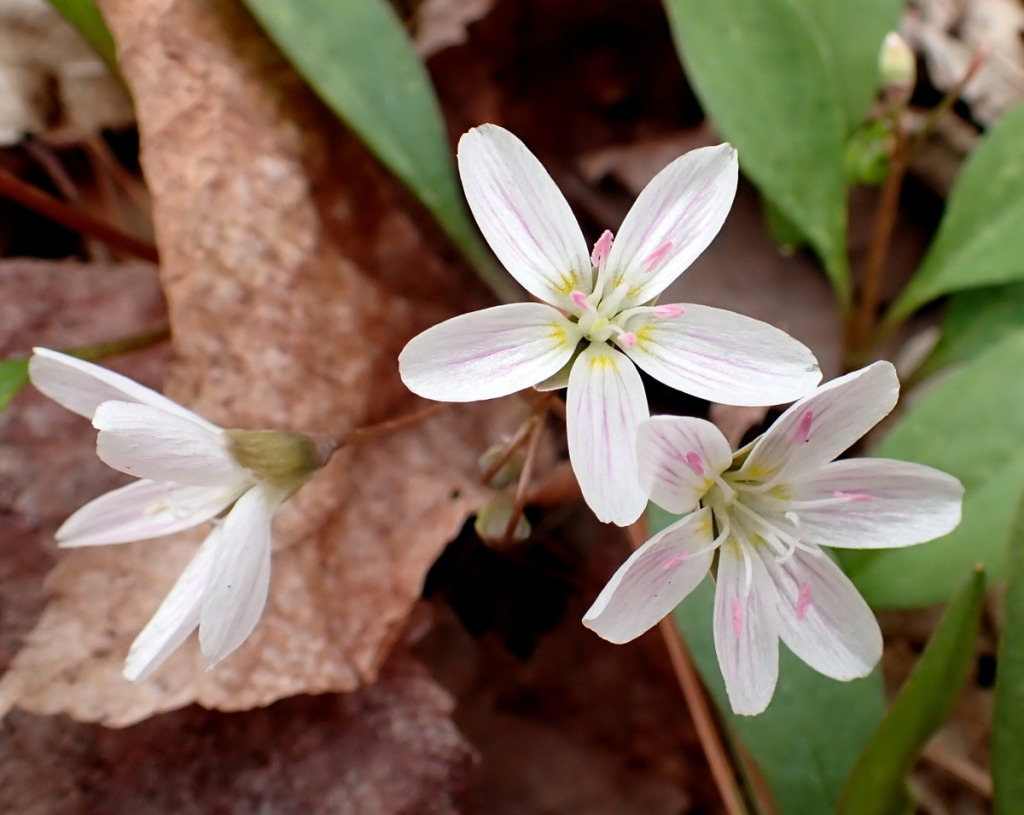
I’ve read that it is the amount of sunlight that determines color in a spring beauty blossom. The deeper the shade, the more intense the color, so I look for them in more shaded areas. These grew in full sun.

Apparently, the petal shape can vary by quite a lot as well. I’ve never noticed it before but the petals on these flowers are far wider and rounder than the long, narrow petals on the flowers in the previous shot. Each flower lasts just three days.
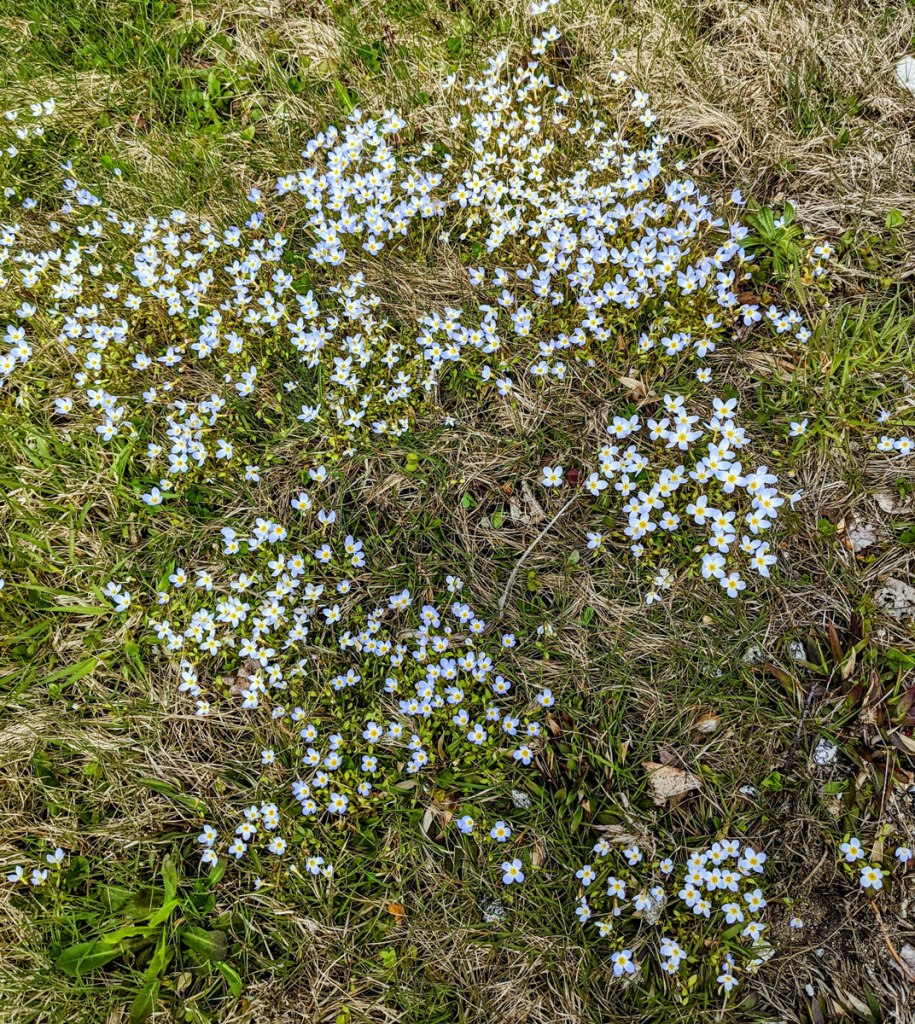
Bluets (Houstonia caerulea) are the same way with color variations. Some are deep blue and others are white and then you see everything in between, but the amount of sunshine doesn’t make a difference because they always grow in full sun.

All the magnolia blossoms that had come out before the frosts were browned on the petal edges but those that came out after were fine, as this one shows. They seem extra fragrant this year.

Siberian bugloss (Brunnera macrophyllas) has just started blooming and each plant has just a few flowers on it so far. The small flowers have great color.

Ornamental cherries have started blooming and are beautiful, as always. I like the star in the center of these particular flowers.

I found this blossom on a Tibetan cherry (Prunus serrula Tibetica.) It looked like it had slept in its clothes. I wonder if they de-wrinkle themselves as they grow. Tibetan cherry is also called the paper bark cherry because of the way its bark peels as it ages, much like a birch, and it is used as an ornamental tree as much for its bark as for its flowers. The mahogany bark has very long, closely spaced lenticels that give it an unusual appearance.

This was a challenge. This hellebore grows in the garden of a friend and the sun was very bright when I was there. I used three different cameras trying to get a shot where the color wasn’t bleached out and this was the only useable one. It was too bad because this flower has deep, rich color. I plan on planting a few more flowers around here in the near future and hellebore will be one of them.

Tulips have come out and many were wide open, but I saw few insects.

Grape hyacinths are having a good year.

The flowers of Japanese andromeda (Pieris japonica) look like they’re blown from milk glass and mounted on the stem with tiny, leaf shaped golden ormolu mounts. I don’t think that they really resemble lily of the valley blossoms but some do, so they call it the lily of the valley shrub. To me they look more like the blueberry family of flowers.

PJM rhododendrons have just started blooming. The PJM in the name is for Peter J. Mezitt who developed the plant and also founded Weston Nurseries in Weston, Massachusetts. They are also called little leaf rhododendron. They are very pretty, and well liked here and have become almost as common as Forsythia.

Forsythias are a good indicator of how cold and snowy it was last winter. Quite often you’ll see the shrubs with blossoms only on the lower branches, and that’s because the cold killed all the buds above the snow line and the only ones that survived were those protected by snow. These bushes are telling me that it was a mild winter. If the temperature had fallen below -20 F., they wouldn’t be blooming like this. There were many years I saw them with just a few blossoms down close to the ground, but not very often in the last decade or so.
Behold, my friends, the spring is come; the earth has gladly received the embraces of the sun, and we shall soon see the results of their love! ~Sitting Bull
Thanks for coming by.

